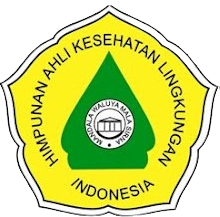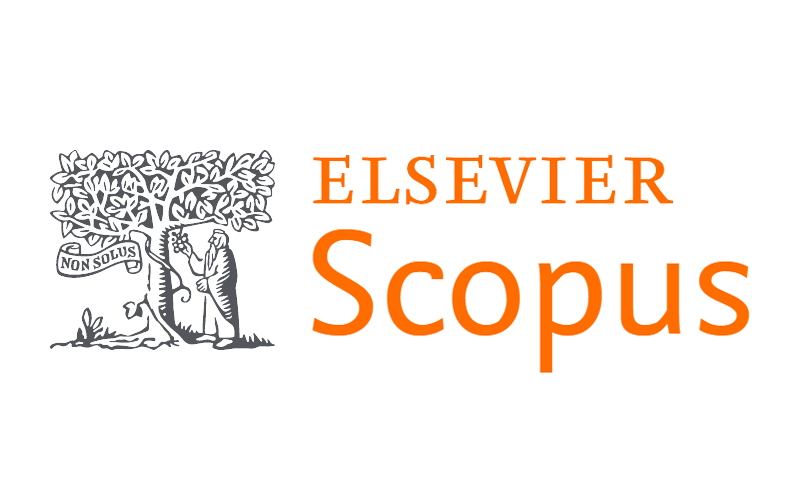Determinants of Adolescents’ Knowledge of Sexuality: A Cross-Sectional Study among Students of Syarif Hidayatullah State Islamic University Jakarta
Abstract
Background: Sexual knowledge is essential for adolescents as it plays a role in increasing their awareness of reproductive health, preventing unintended pregnancies, and reducing the risk of sexually transmitted infections (STIs). However, data show that 85% of adolescents in Indonesia aged 12–17 still lack adequate knowledge about sexuality. The aim of this study was to analyse the determinants related to adolescents' understanding of
sexuality.
Method: This research was a cross-sectional survey with a sample size of 319 students at UIN Syarif Hidayatullah Jakarta. The sampling was conducted using a multistage sampling technique across 12 faculties. The inclusion criteria for this study were active students in good health, while the exclusion criteria were students who were unwilling to participate. The research was conducted from January to November 2023.
Result: The research shows that many students still do not know well about gender stereotypes (51.1%), the difference between primary and secondary signs of puberty (90.3%), and sexual relations (58.9%). The dominant variable influencing students' knowledge of sexuality was whether they had discussed reproductive health (p-value=0.021; OR=2.139; 95% CI 1.119-4.809).
Conclusion: Adolescents’ knowledge of sexuality was generally quite good. However, their understanding remains low in several key aspects, such as gender differences, physical and emotional changes during puberty, and the misconception that first-time sexual intercourse cannot lead to pregnancy. This highlights the need for more comprehensive education to enhance adolescents’ understanding of various aspects of sexuality.
References
United Nations Fund for Population Activities (UNFPA). (2014). Indonesia Youth in the 21st Century. Available from: https://indonesia.unfpa.org/sites/default/files/pub-pdf/Indonesian_Youth_in_the_21st_Century_%28Youth_Mapping%29.pdf
Kudrna G, Le T, Piggot J. (2022). Macro-Demographics and Ageing in Emerging Asia: The Case of Indonesia. Journal of Population Ageing 15: 7-38. Doi: 10.1007/s12062-022-09358-6.
Badan Pusat Statistik. (2020). Sensus Penduduk Indonesia 2020. Jakarta: Badan Pusat Statistik.
Oey-Gardiner M, Gardiner P. (2013). Indonesia’s Demographic Dividend or Window of Opportunity? Masyarakat Indonesia 39(2): 481-504.
Aksoy Y, Basso HS, Smith RP. (2017). Medium-run Implications of Changing Demographic Structure for the Macro-economy. National Institute Economic Review 241(1): 58-64.
Ariteja S. (2017). Demographic Bonus for Indonesia: Challenge and Policy Implications of Promoting Universal Health Coverage. The Indonesian Journal of Development Planning 1(3): 262-274.
Wisnumurti AAGO, Darma IK, Suasih NNR. (2018). Government Policy of Indonesia to Managing Demographic Bonus and Creating Indonesia Gold 2045. IOSR Journal of Humanities and Social Science 23(1): 23-3
Adriani D, Yustini T. (2021). Anticipating the Demographic Bonus from the Perspective of Human Capital in Indonesia. International Journal of Research in Business and Social Science 10(6): 141-152.
Azizah HUN, Indartono S. (2018). Contribution of Educational System Quality and Health Condition to Welcome Demographic Bonus in Indonesia. Advances in Social Science, Education and Humanities Research 323.
Ssewamala FM. (2015). Optimizing the Demographic Dividend in Young Developing Countries: The Role of Contractual Saving and Insurance for Financing Education. International Journal of Social Welfare 24(3): 248-262.
Chen X, Menezes NP, Rusatira JC et al. (2023). Demographic Dividend-Favorable Policy Environment in Two Pre-Dividend African Nations: Review of National Policies and Prospects for Policy Amendments in Nigeria and Tanzania. BMC Public Health 23;1070.
Williams JL, Mims LC, Johnson HE. (2019). Young Adolescent Development. Working Paper. Available from: https://education.virginia.edu/documents/ynworking-paper-young-adolescent-development01-2019pdf
Peper JS, Dahl RE. (2013). The Teenage Brain: Surging Hormones-Brain Behaviour Interactions during Puberty. Current Directions in Psychological Science 22(2): 134-139.
Perng W, Rifas-Shiman SL, Hivert MF et al. (2019). Metabolic Trajectories Across Early Adolescence: Differences by Sex, Weight, Pubertal Status, and Race/Ethnicity. Ann Hum Biol 46(3): 205-214.
Moinichen UI, Mikkelsen A, Faugli A et al. (2021). Impaired Motor Performance in Adolescents with Esophageal Atresia. Journal of Pediatric Surgery 56: 1926–1931.
Das JK, Salam RA, Thornburg KL et al. (2017). Nutrition in Adolescents: Physiology, Metabolism and Nutritional Needs. Annals of the New York Academy of Science 1393(1): 21-33.
Vidal JD. (2016). The Impact of Age on the Female Reproductive System: A Pathologist’s Perspective. Toxicology Pathology 45(1): 206-215.
Kumi-Takyiwaa A. (2022). Adolescent Reproductive Health Issues and Sexual Behaviors in Coastal Communities: A Case of Biriwa, Ghana. Journal of Social Development Studies 3(2): 106-115.
Natalia L, Hariningsih W, Majiah IT. (2020). Effect of Reproductive Health Education on Adolescent Knowledge Level about Unwanted Pregnancy in Palalangon Village, Cianjur Regency. Journal of Vocational Nursing 1(1): 57-63.
Leekuan P, Kane R, Sukwong P et al. (2022). Understanding Sexual and Reproductive Health from the Perspective of Late Adolescents in Northern Thailand: A Phenomenological Study. Reproductive Health 19: 230.
Widyatuti, Waluyanti FT, Mulyadi B et al. (2016). The Influence of Health Training on Teachers and Students’ Knowledge of Adolescent Reproductive Health. Enfermeria Clinica 28(1).
Norris SA, Fronggillo EA, Black MM et al. (2022). Nutrition in Adolescent Growth and Development. Adolescent Nutrition 399(10320): 172-184.
Lun CH, Mazen A, Katherine S. (2016). Energy Expenditure and Intake during Puberty in Healthy Nonobese Adolescents: A Systematic Review. The American Journal of Clinical Nutrition 104(4): 1061-1074.
Parida SP, Gajjala A, Giri PP. (2021). Empowering Adolescent Girls, Is Sexual and Reproductive Health Education A Solution? Journal of Family Medicine and Primary Care 10(1): 66-71.
Violita F, Hadi EN. (2019). Determinants of Adolescent Reproductive Health Service Utilization by Senior High School Students in Makassar, Indonesia. BMC Public Health 19(289).
Rizqi YNK, Nafisah L, Aryani AA. (2021). Service Implementation Analysis of Adolescent Reproductive Health toward Adolescents’ Expectations and Needs. Journal of Public Health 17(2): 269-278.
Marcell, Arik V., et al. (2012). "Male perspectives on sexual and reproductive health: do they differ from those of females?" American Journal of Men's Health 6.3: 216-226.
Marston, Cicely, and Sharon S. Weine. (2011) "What do we know about how men navigate the domain of sexual and reproductive health? Perspectives of key stakeholders." Culture, Health & Sexuality 13.6: 737-751.
United Nations Population Fund (UNFPA). (2018) "Adolescent Boys and Young Men: Engaging Them as Supporters of Gender Equality and Health and Understanding Their Vulnerabilities." UNFPA.
Chandra-Mouli, Venkatraman, et al. (2014)."Contraception for adolescents in low and middle-income countries: needs, barriers, and access." Reproductive Health 11.1: 1-8.
The Society for Adolescent Health and Medicine. (2014). Sexual and Reproductive Health Care: A Position Paper of the Society for Adolescent Health and Medicine. Journal of Adolescent Health 54: 491-496.
Fitria, A., Safitri, J., Nisa, H. 2023. Hubungan Akses Informasi Kesehatan dengan Pengetahuan Kesehatan Reproduksi pada Mahasiswa Universitas Islam Negeri Syarif Hidayatullah Jakarta. Jumantik, Volume 8 No. 2 Mei 2023
Rahma, M. 2018. Hubungan antara Pengetahuan Seksualitas dengan perilaku Seksual Remaja di SMA Negeri 1 Surabaya. Jurnal Bidan “Midwife Journal” Volume 5 No. 01, Jan 2018
Kolin, P.A.L., Keraf.M.K.P.A., Wijaya P., Kiling, I.Y. 2021. Sexual Knowledge and Sexual Attitudes towards Premarital Sexual Intentions of High School Adolescents. Journal of Health and Behavioral Science Vol.3, No.1, March 2021, pp.69-82
Sibarani, P.M.H., Alkaff, R.N., Nasir, N.M., Tahangnacca, M., Aristi, D. 2022. Gambaran Perilaku Berpacaran pada Siswa SMA X Jakarta Barat. Jurnal Masyarakat Sehat Indonesia, 2022; 01 (01): 22-30
Santelli, John S., et al. (2007). "Explaining recent declines in adolescent pregnancy in the United States: the contribution of abstinence and improved contraceptive use." American Journal of Public Health 97.1: 150-156.
Kirby, Douglas. "Emerging answers (2007): Research findings on programs to reduce teen pregnancy and sexually transmitted diseases." National Campaign to Prevent Teen and Unplanned Pregnancy
Arisandi, L.F., Aristi, D., Nasir, N.M., 2022. Keserasan dalam Pacaran pada Siswa Sekolah Menegah Atas. Keskom, 2022; 8(3): 489-495









.jpg)








